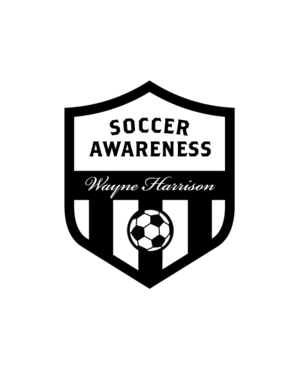Warm Up: Angled Support and Sideways On Positioning
/The following drill is an excerpt from Soccer Awareness eBook 6: Sideways On or Facing Forward Body Shape for Striker Position; The Brazilian Way.
This book includes In-Depth Information on Striker Movement.
Soccer is a sideways on sport -- players will have much more success when they are able to receive the ball at an angle. Being sideways on allows players, in advance of the ball, to be able to see peripherally advancing defenders.
These exercises are excellent for developing this sideways on aspect of receiving and passing the ball. This aspect of play becomes particularly important when one touch soccer is required. Being able to have the body halfway turned enables attacking players to use a couple of maneuvers to get past defenders. Get it Now
One team inside, one team outside. A ball is with each outside player to begin. Pass to an inside player who receives and turns and finds another outside free player with a pass. Then look to receive from another outside player. The outside player receives and moves the ball side to side until another inside player is free to receive a pass. This ensures all the players are working both inside the grid and outside it. Player support at angles to receive opening up the field of play, not in straight lines; do not do what (4) above has done where there is no options and no vision based on the position (4) is in.
Change the practice to all soccer balls starting with the inside players. These players now look to pass and receive a give and go from an outside player. Rotate the players so both teams have the chance to play in the middle of the grid. Move both teams to the middle; divide the grid into two with each team passing to their own team within their own grid area keeping teams separate to begin.
Mix the play up, let it run through the legs and turn (weight of past), chip the ball into space, use the inside and outside of the foot to receive and turn, play a double pass, look twice before you receive.
Competitive: Have the receiving players count the number of times they receive and pass the ball in a set time period. Only count the passes that are accurate. This speeds up the decision making process.











